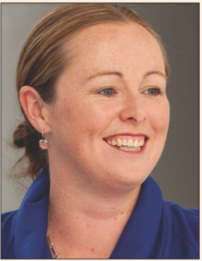Are you aware of changes to the taxation of phone and travel allowances?
About the Author:
Sarah Kennedy
Associate Director and Tax Specialist at Deloitte
Sarah assists clients with GST, FBT, income tax and charities advice. Having a passion for indirect taxes, she focuses on technical and process driven GST and FBT issues and opportunities.
Late last year Inland Revenue finalised its views on the taxation of telecommunication allowances/reimbursements and employer provided travel.
The following two articles provide guidance on these changes.
Use of employee provided telecommunication tools and usage plans in employment(Determination EE001)
Inland Revenue has set out three standardised options for identifying the exempt portion of telecommunications reimbursement or allowance for employee provided devices (sometimes referred to as a “bring your own device” or “BYOD”).
Employer provided devices and usage plans will still be subject to FBT and the possible FBT exemption for business tools costing up to $5,000, rather than falling into this new classification.
The key take away is that the old “50% rule of thumb” where employers treated 50% of an allowance/reimbursement as exempt can no longer be used. Instead, there are three new rules proposed – 25%, 75% and a 100% de minimis rule. Employers can also choose a different method to these three options if they have sufficient supporting data to justify it.
Given this, employers should be reviewing allowance policies now to ensure they are compliant with the new Determination as soon as possible. It applies from 20 December 2019.
The starting point is that if the allowance/reimbursement covers only the business use of the device, then the payment will be fully exempt. However, if the payment covers some private use then the three classes available should be considered.
The three classes are as follows:
CLASS A
Applies if the principal use of the device / usage plan is for employment.
75% of the allowance or reimbursement will be exempt.
Employers need to demonstrate reasonable judgement in determining whether the principal use is employment. This can be based on time spent, a staff survey or signed declarations from employees confirming principal use.
Class A can also apply to under 50% business usage in some limited situations where on call requirements mean it is very important for employees to be available at all times for calls.
CLASS B
Applies if the device / usage plan is required for business (i.e. it is necessary, not a “nice--have”) and the device / usage plan is not principally used for employment.
25% of the allowance or reimbursement will be exempt.
An employment policy (noting the business reasons for needing a device) will sufficiently support using Class B provided that some actual business use by employees occurs over time.
DE MINIMIS CLASS C
Applies if the amount reimbursed is $5 a week or less (maximum of $265 a year).
100% of the allowance or reimbursement will be exempt.
No records are required to support this de minimis level of reimbursement.
While pragmatic in parts, there are some complexities involved in applying the apportionment classes. Employers will need to invest some time in gathering further evidence, developing signed declarations or refreshing employment policy documents in order to align with Inland Revenue’s new approach.
Employer-provided travel from home to a distant workplace (Os 19/05)
Inland Revenue has released its final operational statement to “clarify and simplify the tax rules around employer-provided travel to distant workplaces”.
Applying this statement is compulsory from 1 April 2020 and optional until then. Employers do not have to correct historic positions if they are different to the positions in the operational statement and the Commissioner will not be looking backwards except in cases of identified tax avoidance.
As a starting point, the cost of commuting between home and work is private expenditure of an employee, and employer payments for travel from home to a workplace are usually taxable. However, Inland Revenue recognises four exceptions to this:
The travel is one-off or very occasional (de minimis);
The travel relates to a temporary posting or secondment (up to two years);
The employee also genuinely works at a hometown workplace (meaning they have two workplaces);
The employee works from home on specified days and the travel relates to one of those days.
The travel is one-off or very occasional (de minimis)
Any incidental travel, for example attending a conference, will not be subject to tax. This rule applies regardless of whether the employee ordinarily works from home or at an office.
The travel relates to a temporary posting or secondment
If travel to a distant workplace is reasonably expected to last for less than two years, it is not taxable (this aligns with the treatment of accommodation for secondments). However, if at any point the expectations for the period of travel change, then the tax treatment changes from the date of that change in expectation.
The employee also genuinely works at a hometown workplace (meaning they have two workplaces)
Travel to a distant workplace for a period of greater than two years is generally taxable unless an employee has multiple workplaces (e.g. Auckland office and Wellington office) which means that travel between these workplaces can be non-taxable on an ongoing basis.
It is possible to meet the multiple workplace test where one of these workplaces is an employee’s personal home. This requires both a clearly documented multiple workplace arrangement and a business need for the employee to work from home (this need must arise from the nature of the work rather than from the personal choice or personal circumstances of employee).
The employee works from home on specified days and the travel relates to one of those days.
Where an employee contractually and actually uses their home to work, travel to a distant workplace on these “work from home” days is non-taxable. One key point to note here is that this non-taxable treatment applies only when the travel occurs on the fixed “work from home” day. In our view, the requirement for fixed “work from home” days is unlikely to reflect commercial reality for a number of employers. This is because many flexible working arrangements have some variability based on business need (for example allowing “work from home” and “work from office” days to be switched if there is an important meeting on a day that an employee ordinarily works from home). Having these variable arrangements in place means that travel from home to a distant workplace will be taxable.
Next steps
As the telecommunications tools determination is an interpretation of the law as it stands, employers with BYOD policies should make reviewing compliance with the statement and making updates to their telecommunications policies a matter of priority. In addition, employers should be reviewing all travel-related payments provided to employees, particularly recurrent payments, prior to 1 April 2020 when these rules become compulsory to apply.
Associate Director - Tax
Deloitte
04 470 3500










On 28 February 2021, Auckland moved to COVID-19 Alert Level 3 for at least seven days, while the rest of New Zealand has returned to COVID-19 Alert Level 2. These changes in Alert Levels can result in significant economic effects and it’s important for businesses to understand what government support is available.